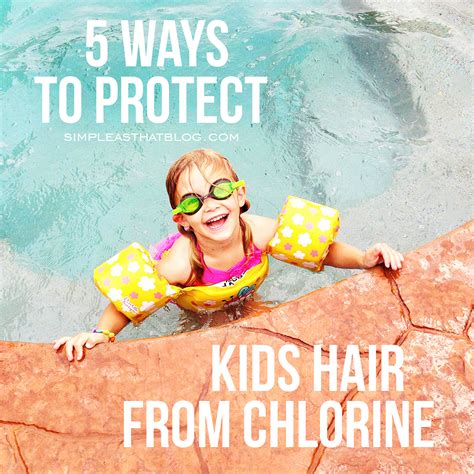Swimming with Blonde Hair: Chlorine Protection Musts
For blonde hair enthusiasts who love a refreshing dip in the pool, the battle against chlorine damage is a constant one. Chlorine, while keeping the pool clean, can wreak havoc on lightened locks, leading to dryness, brassiness, and breakage. But fear not, fellow blonde swimmers! With the right preventative measures and aftercare, you can maintain healthy, vibrant, and gorgeous blonde hair, even after countless poolside adventures. This comprehensive guide dives into the must-have chlorine protection strategies for keeping your blonde beautiful.
What Does Chlorine Do to Blonde Hair?
Chlorine's harsh chemicals strip the hair of its natural oils, leading to dryness and brittleness. For blonde hair, which is often already more porous due to lightening processes, this damage is amplified. The chlorine reacts with the hair's pigment, resulting in a dull, greenish, or brassy tone. This is especially noticeable in individuals with lighter shades of blonde, like platinum or icy blonde. The damage isn't just cosmetic; it weakens the hair shaft, making it more prone to breakage and split ends.
How to Protect Blonde Hair Before Swimming: Wet Your Hair First
Why this works: Before entering the pool, wet your hair thoroughly with clean water. This pre-soaks your hair, minimizing the amount of chlorine it absorbs. Think of it as filling up a sponge with clean water before submerging it in chlorinated water; it won't absorb as much of the harmful substance.
Best Products for Chlorine Protection: The Pre-Swim Treatment
Investing in a pre-swim protective product is a game-changer. These specialized treatments create a barrier between your hair and the chlorine, minimizing its damaging effects. Look for products that contain ingredients like:
- Silicone: Creates a protective coating around the hair shaft.
- Oils (e.g., coconut, argan): Condition and nourish the hair, reducing dryness.
- UV filters: Protect against sun damage, often compounded by chlorine exposure.
Many brands offer leave-in sprays, creams, or serums designed specifically for pre-swim protection. Apply generously before entering the pool.
Should I Wear a Swim Cap? The Importance of Physical Barriers
While not a perfect solution, a swim cap provides a physical barrier against chlorine. It won't completely prevent all exposure, but it will significantly reduce the amount of chlorine your hair absorbs. Choose a high-quality, well-fitting swim cap made of silicone for optimal protection.
Washing Your Hair After Swimming: Post-Swim Hair Care Routine
After swimming, it's crucial to rinse your hair thoroughly with clean, cool water to remove as much chlorine as possible. Follow this with a clarifying shampoo to remove any remaining chlorine and product buildup. Then, use a deep conditioning treatment to replenish moisture and repair any damage. Look for conditioners formulated for color-treated hair to help maintain your blonde tone.
How Often Should I Wash My Hair After Swimming?
Washing your hair immediately after swimming is recommended to minimize chlorine damage. Delaying the wash allows chlorine to linger, causing more significant damage. However, over-washing can also strip natural oils, so aim for a balance. If you swim frequently, consider washing your hair daily, but opt for a gentle sulfate-free shampoo and a hydrating conditioner to minimize further dryness.
What are Some Home Remedies for Chlorine Damaged Hair?
While commercial products offer targeted solutions, some home remedies can help to soothe chlorine-damaged hair. A simple rinse with apple cider vinegar can help restore the hair's pH balance. Deep conditioning treatments with natural oils like coconut oil or olive oil can also provide intensive hydration and repair.
Can I Prevent Chlorine Damage Completely?
Completely preventing chlorine damage is challenging, but minimizing it is achievable through diligent preventative and aftercare measures. A combination of pre-swim protection, a swim cap (where appropriate), thorough rinsing, and regular deep conditioning will significantly reduce the negative impacts of chlorine on your blonde hair.
By following these tips and incorporating a consistent hair care routine, you can keep your blonde hair healthy, vibrant, and dazzling—even after a refreshing swim. Remember, consistency is key!

